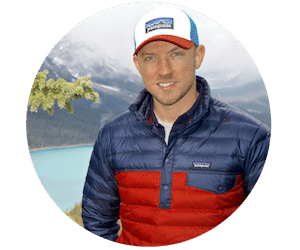THAME TO LUMDENG KEY STATS
- Starting Point: Thame (3,820m/12,500ft)
- Finishing Point: Lumdeng (4,600m/14,450ft)
- Distance:10.5km/6.5mi
- Trekking Time: 5 Hours
- Accommodation: Pass Support Lodge
THAME TO LUMDENG EVEREST BASE CAMP TREK DIARY

















THAME TO LUMDENG VIDEO
LOOKING FOR NITTY GRITTY DETAILS?
Check out the day as recorded by Stava. See the trails taken, overall elevation gains, trekking times and how fast (or slow) we made it from Point A to Point B.
TRAVEL PLANNING ESSENTIALS: NEPAL
Flights
Nepal is accessible via Tribhuvan International Airport in Kathmandu. Check out Kayak to find the best deals on flights to Nepal.
Accommodation
As a long-time rewards member, Hotels.com is my first stop when exploring accommodation options. Not only do they have great inventory, but you get a free nights stay after every 10th booking.
Travel Insurance
Considering travel insurance for your trip? World Nomads offers coverage for more than 150 adventure activities as well as emergency medical, lost luggage, trip cancellation and more. (As an affiliate, we receive a fee when you get a quote from World Nomads using this link. We do not represent World Nomads. This is information only and not a recommendation to buy travel insurance.)
ENJOY THAME TO LUMDENG? CHECK OUT MORE OF THE EVEREST BASE CAMP TREK AT EVEREST BASE CAMP TREK DIARY.
Disclosure: Please note that some of the links above are affiliate links and I earn a small commission if you make a purchase. I personally use all of these companies for my own travel needs and feel they can help you make yours. Clicking through the links doesn’t cost you anything and if you decide to make a purchase with one of these organisations, you will be helping to support the DomOnTheGo website.



Wow! As avid trekkers and mountaineers in the Philippines, hiking to EBC is one of our fondest dreams. The scenery is just stunning. Hopefully, we can hike here soon. 🙂
Thanks for the kind words. We spent almost 3 weeks in the Philippines, but with the exception of visiting the hanging coffins and the volcano outside of Manila, we didn’t do much trekking. Where would you recommend this for the next time?
There are a lot of places to trek in the Philippines. Check out our blog and click on the “Mountain Trekking” tab. 🙂
Try out other adventures as well—caving, canyoning, etc.
Awesome – will deffo check it out. Loved our trip there recently and can’t wait to get back there. 🙂
I love reading these posts! The simple tea houses you describe here are more what I expected the sleeping arrangements to be up there, but after the electric blankets and hot showers, I would have struggled haa.
When I read that the dog came over to you as an escort/cheerleader I melted! Love how friendly animals can be. A very enjoyable read and great photos as well. Thanks for sharing.
I felt I was with you as you trudged along the river valley path and slowly gained attitude. It was as if I could see the furry pup who came a long way to escort you to the tea house. I could feel the strain as you went for an acclimatization walk. In short I was thrilled and fascinated by your every step. Waiting with bated breath for the next part of your adventure.
I went to Everest Base Camp in April – it is good reading about the experience of others. Looks like you got better afternoon weather than I did. And I am with Rob when it comes to the teahouses – not a fan! At least you had the Yeti the first few nights – I did tea houses the whole way – never again! My advice now to everyone is to Yeti for as long as possible!
So sweet that the dog fetched you and boug you to the tea house. He must have been a friendly face! Can’t wait to read the next instalments of your adventure!
Haha I agree. He was a curious little thing, but I think he does it for everyone. Now that the climbing season is happening again, I keep seeing his fluffy face cropping up on Instagram. Thanks for chkcing us out. 🙂
This experience should have been simply great! And your photos are so descriptive of the amazing landscapes and breath-taking views!!
Thanks for the kind words Clara. Thanks for checking us out.
traversing mountains by day and meeting other weary travelers in tea-houses by night sounds like something out of a novel!
It’s deffo the way on the trails in these remote parts of the world. Although – the further along we got on this trek the busier the trails got. It’s great intel though – you always find out what lies ahead and what the conditions are before you head out, which is great.
Those views are absolutely incredible, it looks like the air is so clean and pure up there! Good tip on acclimatization walks, I’ve heard some horror stories about altitude sickness so I’ll have to bear this in mind if we ever head to this trek. The tea houses look basic, but cozy, and I would have loved to hang out with that dog, he must have been so happy to see you folks.
Thanks for the kind words. That dog as happy to see us, but I think it’s cheating on us lol. I keep seeing him cropping up over Instagram with other trekkers. So much for loyalty. 🙂
That is a useful tip about taking the side acclimatization walks to prepare your body for the altitude. You’ve taken some stunning photos during this trek – some people must go when it’s cloudy and see nothing. The day I take this trek I hope for weather like you guys!
The acclimatisation walks are really the only way to help coach your body through these sorts of outings. It’s also a great way to see how your body will respond – sometimes you will never know until you are there. And yes – we had great weather for our trek. We went on the shoulder season before the main climbing time and it was ideal. Less crowded with views. Those that get the clouds or no views at all are either a) just doing the trek for the exercise or b) didn’t do their research.